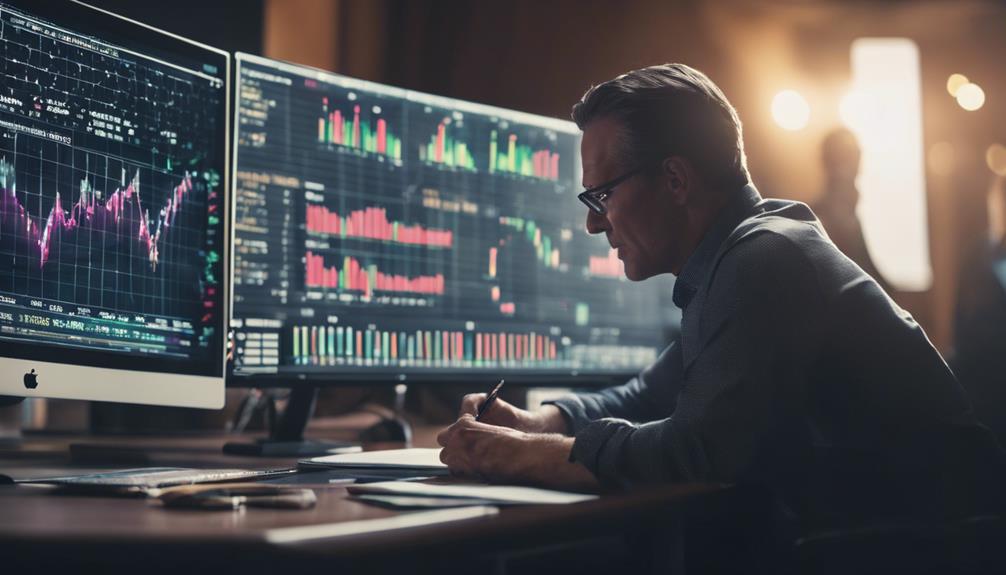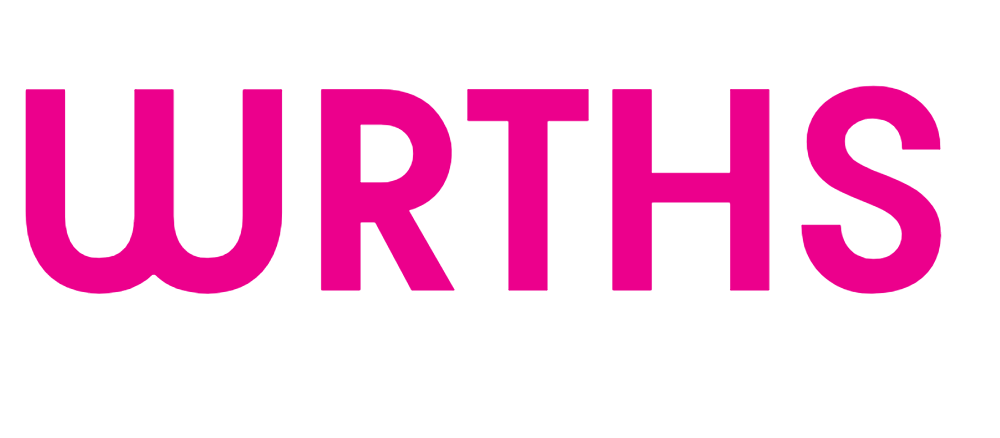Celebrities from Silicon Valley and Hollywood play a significant role in tech investments, injecting billions into startups. In 2015, about $2 billion flowed from celebrities into the tech sector, boosting industry growth. Icons like Jay-Z and Serena Williams run venture capital funds, enhancing diversity in tech investing. Notable names such as Dr. Dre and Ashton Kutcher have launched or funded startups across various industries. While some question celebrity expertise in tech, their involvement brings valuable insights and spotlight to emerging companies. This star-studded alliance expands financial horizons and shapes the technological future.
Key Takeaways
- Celebrities actively invest billions in tech companies, influencing funding rounds and industry expansion.
- They prefer Series A/B startups, diversify with cryptocurrencies, and boost startups with endorsements.
- Celebrity-owned VC funds like Marcy Venture Partners and Serena Ventures drive tech investments.
- Celebrities launch and invest in startups across sectors for wealth diversification.
- Their involvement attracts media attention, provides expertise, and boosts tech companies' reputations.
Celebrity Influence on Tech Investments
Celebrities exert a significant influence on tech investments, actively participating in funding rounds and contributing billions of dollars to private tech companies. In 2015, celebrities invested approximately $2 billion in private tech companies, showcasing their increasing involvement in the tech sector.
The top 75 investors engaged in over 350 funding rounds, totaling $4.6 billion, underscoring the substantial impact of celebrity investments in tech ventures. A-list celebrities from various industries such as music, TV, movies, sports, and fashion are deeply involved in funding tech startups, thereby fueling the industry's expansion.
Tech investments have evolved into a symbol of status for celebrities, drawing them to Silicon Valley and enabling them to exhibit brand diversity and relevance. Many celebrities choose to invest in Series A or Series B companies focusing on emerging areas like cryptocurrencies, blockchain, and esports, aligning their investments with the interests of their followers and uplifting startups in these sectors.
Types of Celebrity Investments

Celebrities often engage in various types of investments within the tech industry. These can range from backing tech startups to participating in high-profile tech acquisitions and forming partnerships with tech companies.
Celebrity-Backed Tech Startups
Preferring Series A or Series B tech companies, celebrities strategically invest to align with their existing audiences and boost the startups' profiles. A prominent example of celebrity-backed tech startups includes investments in companies like Casper, known for its innovative mattresses, and Lyft, a popular ride-sharing service.
Notable figures such as Ashton Kutcher, Nas, and Paris Hilton have ventured into the world of cryptocurrencies, blockchain, and ICOs, diversifying their tech investment portfolios. By providing publicity and leveraging their extensive networks, celebrities secure equity in tech startups, creating a mutually beneficial arrangement.
Some celebrities have even taken a more hands-on approach by establishing their venture capital funds to explore further into technology and media investments, further solidifying their presence in the tech investment landscape. These celebrity endorsements not only bring financial support but also add a layer of credibility and exposure to the tech startups they back.
High-Profile Tech Acquisitions
Investing in high-profile tech acquisitions, celebrities have strategically diversified their portfolios to include prominent companies like Uber and Airbnb. Ashton Kutcher, known for his tech-savvy investments, has been involved with Uber and Airbnb, leveraging his insights to support these industry giants.
Similarly, Jay Z's acquisition of Tidal showcases his interest in the music streaming sector, with his active participation in 13 funding rounds through Marcy Venture Partners. Serena Williams, through Serena Ventures, has strategically invested in companies like Impossible Foods and MasterClass, participating in 32 funding rounds to support innovative ventures.
Snoop Dogg's Casa Verde Capital focuses on the legal cannabis industry, participating in 27 funding rounds and making notable investments in platforms like Reddit and Klarna. These high-profile tech investments not only reflect celebrities' financial acumen but also their strategic vision in backing companies with promising growth potential in various sectors.
Celebrity Tech Partnerships
In the world of tech partnerships, celebrities often seek out opportunities to collaborate with emerging companies in order to leverage their influence and expertise.
- Celebrities prefer investing in Series A or Series B companies to align with their audiences and elevate startups, rather than opting for seed funding rounds.
- Many celebrities have diversified their investments by showing interest in cryptocurrencies, blockchain, and ICOs, exploring sectors beyond their primary expertise.
- ICOs have gained popularity among celebrities who seek to support cutting-edge blockchain and crypto projects, showcasing their involvement in innovative technologies.
- Celebrities offer publicity and connections to startups in the tech sector in exchange for equity, utilizing their influence to benefit these companies.
Celebrity investments in tech and fintech soared to $2 billion in 2015, underscoring their increasing engagement and interest in the technology industry.
Celebrity-Owned VC Funds

Venture capital funds owned by celebrities bring a unique perspective and investment strategy to the tech industry.
Jay-Z's Marcy Venture Partners has made waves with investments in prominent companies like Uber and Robinhood, participating in 13 funding rounds.
Serena Williams, through Serena Ventures, has been a strong advocate for women and minority founders, engaging in 32 funding rounds and supporting companies such as Impossible Foods and MasterClass.
Ashton Kutcher's A-Grade Investments and Sound Ventures have been involved in a staggering 177 funding rounds, pouring over $3 billion into startups like Uber, Airbnb, and Spotify.
Will Smith's Dreamers VC, in collaboration with Keisuke Honda, has shown interest in tech and startups, backing ventures like The Boring Company and Gen.G in 27 funding rounds.
Snoop Dogg's Casa Verde Capital, focusing on the legal cannabis industry, has invested in companies like Reddit and Klarna across 27 funding rounds, demonstrating a unique niche in the VC landscape.
Celebrities Launching Startups

With a surge of entrepreneurial spirit, celebrities are stepping into the tech industry by launching their own startups.
- Celebrities like Dr. Dre and Jay Z have successfully founded tech companies such as Beats Electronics and Tidal, demonstrating their prowess in entrepreneurial ventures within the tech sector.
- Ashton Kutcher and Nas have shown a keen interest in cryptocurrencies and ICOs, investing substantially in blockchain and various tech startups.
- Leveraging their fame and wealth, celebrities are establishing their venture capital funds to support a wide array of technology and media companies.
- Prominent figures like Gwyneth Paltrow and Robert Downey Jr. have ventured into launching their own startup companies, investing in tech businesses that focus on environmental solutions and improving food shelf-life.
Through their involvement in these startups, celebrities are showcasing their business acumen and expanding their investment portfolios beyond the confines of the entertainment industry.
Opinions on Celebrity Tech Investments

Celebrity involvement in tech investments sparks varied opinions among industry experts and observers. Some view celebrity capital in tech as a potential indicator of a tech bubble, expressing concerns about the sustainability of investments.
Startups encounter challenges in fundraising, as venture capitalists exhibit selectivity and discernment regarding celebrity involvement. Venture capitalists may resist celebrity investments due to potential demands for additional benefits or 'sweeteners' beyond capital. Nevertheless, some venture capitalists welcome celebrity investments as they can enhance market awareness and elevate morale within startups.
Celebrity endorsements in the tech sector have the capacity to generate significant visibility and credibility for startups aiming to establish themselves in the market. The debate surrounding celebrity involvement in tech investments is multifaceted, encompassing considerations of market credibility, fundraising challenges, and the overall impact on the sustainability of startups.
Observers and experts emphasize the importance of evaluating the nuanced effects of celebrity participation in tech investments to make informed decisions.
Financial Impact on Celebrities

Celebrities, often facing financial uncertainties despite their fame, turn to tech investments as a means to secure long-term earnings. These investments provide a strategic avenue for wealth diversification, particularly important for athletes whose careers can end abruptly, pushing them to explore alternative financial avenues.
While tech ventures offer promising opportunities, celebrities must navigate the risks associated with such investments to safeguard their financial futures.
Celebrity Investment Success
Investing in private tech companies has greatly enhanced the financial portfolios of various high-profile individuals in the entertainment industry.
- Celebrity Investment Impact: Celebrities poured approximately $2 billion into private tech companies in 2015, solidifying their presence in the tech sector and displaying growing financial involvement.
- Significant Financial Influence: The top 75 investors engaged in over 350 funding rounds, accumulating an impressive total of $4.6 billion, underscoring the substantial monetary effect of celebrity investments.
- Status Symbol and Brand Diversity: Tech investments have evolved into a status symbol for celebrities, drawing them to Silicon Valley and showcasing their relevance and brand diversity within the industry.
- Successful Ventures: Celebrities like Ashton Kutcher and Dr. Dre have leveraged their investments in tech to resonate with their followers and boost startups, with Dr. Dre's Beats Electronics acquisition by Apple for $3 billion standing out as a notable success story in the domain of celebrity tech investments.
Wealth Diversification Strategies
Implementing a strategic approach to diversifying wealth, high-profile individuals in the entertainment industry are increasingly turning towards tech investments. Celebrities view tech investments as a means to expand their financial portfolios beyond their primary income streams in Hollywood.
By venturing into tech companies, celebrities can secure continuous earnings even post-retirement, providing them with a flexible income source. Unlike failed traditional business ventures that could harm their reputations, setbacks in tech startups have minimal impact on celebrities' public image.
Additionally, the tech industry allows celebrities to take more risks without jeopardizing their main careers, offering them a platform for wealth diversification. This shift towards tech investments showcases how celebrities are exploring new avenues to safeguard their financial futures and establish a more sustainable financial footing, bridging the gap between Hollywood glamour and Silicon Valley innovation.
Risks in Tech Ventures
Exploring tech ventures entails maneuvering potential financial risks that could impact celebrities' earnings and investments. Celebrities venturing into tech investments face the following challenges:
- Failed Ventures: Unsuccessful tech ventures can have a detrimental financial impact on celebrities, potentially affecting their wealth and financial stability.
- Evaluating Opportunities: It's vital for celebrity investors to carefully assess tech opportunities to minimize financial risks and guarantee sustainable returns on their investments.
- Diversification: Diversifying tech investments can aid celebrities in mitigating financial risks and creating a more resilient investment portfolio.
- Informed Decisions: Understanding the risks and rewards associated with tech investments is essential for celebrities to make informed decisions, safeguarding their financial interests.
Navigating the world of tech ventures demands prudence and strategic decision-making to safeguard celebrities' financial well-being. By evaluating opportunities diligently, diversifying their investment portfolios, and making informed choices, celebrities can better navigate the uncertainties of the tech industry and optimize their financial outcomes.
Most Active Celebrity Tech Investors

Celebrity involvement in tech investments has surged in recent years, with notable figures like Ashton Kutcher, Nas, and Paris Hilton actively participating in funding rounds. Kutcher, for instance, has been involved in an impressive 177 funding rounds. In total, the top 75 investors, which include celebrities, have engaged in over 350 funding rounds, amounting to a significant $4.6 billion since 2007. Celebrities haven't shied away from investing in private tech companies, with approximately $2 billion being invested in 2015 alone across 101 deals. Noteworthy, around half of the most active celebrity investors hail from the music industry, showcasing their efforts to diversify their portfolios into the tech sector.
Moreover, the tech industry has witnessed a rise in celebrity presence, exemplified by initiatives like Apple TV's tech show 'Planet of the Apps' featuring celebrity judges. This trend underscores the increasing involvement of celebrities in the tech sector, marking a significant shift in the landscape of tech investments.
Diversification of Celebrity Investments

Celebrities strategically diversify their investment portfolios across various sectors to minimize risk exposure. When it comes to tech investments, many celebrities have shown a keen interest in cryptocurrencies, blockchain, and ICOs. These alternative investments offer a unique opportunity for celebrities to participate in cutting-edge technologies while potentially reaping significant returns. ICOs, in particular, have gained popularity among celebrities looking to support innovative blockchain and crypto projects.
In addition to cryptocurrencies, celebrities also opt for traditional tech investments like Series A and Series B funding rounds. These investments not only align with celebrities' existing audiences but also play a significant role in enhancing the growth of startups. By strategically choosing to invest in later-stage funding rounds rather than seed funding, celebrities can leverage their influence to propel startups towards success in Silicon Valley and beyond.
Future of Celebrity-Tech Collaborations

With the increasing integration of celebrities into tech investments, the future of celebrity-tech collaborations is poised to redefine traditional investment landscapes. Celebrities are becoming prominent celebrity investors in private tech companies, indicating a shift in the tech investment landscape towards more diverse backgrounds. Their expanding portfolios beyond their primary industries showcase a growing interest in tech investments. Shows like 'Planet of the Apps' featuring celebrity judges underscore the celebrity presence in tech-related ventures. The future collaborations between celebrities and tech companies are expected to bring fresh perspectives and innovative ideas to the table. This trend not only benefits the celebrities by diversifying their investments but also provides private tech companies with valuable expertise and exposure. As celebrities from various fields like TV, movies, sports, and fashion continue to engage in tech investments, the synergy between Hollywood and Silicon Valley is set to deepen, shaping the future of investments in the tech industry.
| Key Points | Implications |
|---|---|
| Celebrities in tech investments | Changing the dynamics of the tech investment landscape |
| Celebrity investors | Bringing diverse backgrounds and experiences to the table |
| Growing interest in tech | Signifying a shift towards more celebrity involvement in tech ventures |
Frequently Asked Questions
What Are Silicon Valley Investors Called?
Silicon Valley investors are commonly known as venture capitalists (VCs) or angel investors. They provide funding to early-stage startups in exchange for equity in the company.
These investors play a crucial role in fueling innovation and entrepreneurship in the tech industry. They typically seek high-growth potential and disruptive ideas when selecting companies to invest in.
Silicon Valley investors often have backgrounds in technology, finance, or entrepreneurship.
Where Are Celebrities Investing?
Celebrities are investing in various sectors, including tech. They seek to diversify their portfolios for long-term financial stability. This trend aligns with a broader strategy to secure post-retirement income streams.
Notable figures like Gwyneth Paltrow and Robert Downey Jr. have backed startups like The Expert and FootPrint Coalition Ventures. By entering the tech investment domain, celebrities aim to capitalize on emerging opportunities and contribute to innovative ventures.
How to Get a Celebrity to Invest in Your Business?
Emphasize the alignment of your brand with theirs is crucial when seeking a celebrity to invest in your business. Show how the investment can benefit both parties. According to Forbes, 'Celebrity endorsements can bring not only capital but also valuable publicity.'
Seeking celebrities who've expressed interest in tech investments can increase your chances of securing their support. Keep in mind, presenting a compelling pitch that clearly outlines the mutual benefits of the partnership is vital.
Conclusion
To sum up, the collaboration between Silicon Valley and Hollywood celebrities in tech investments is reshaping the landscape of the industry. With stars like Ashton Kutcher and Will Smith leading the way, celebrity influence is becoming more prevalent in the startup world.
As investments continue to diversify and grow, the future holds promising opportunities for both celebrities and tech companies alike. As Will Smith once said, 'Investing in tech isn't just about financial gains, but also about shaping the future of innovation.'











